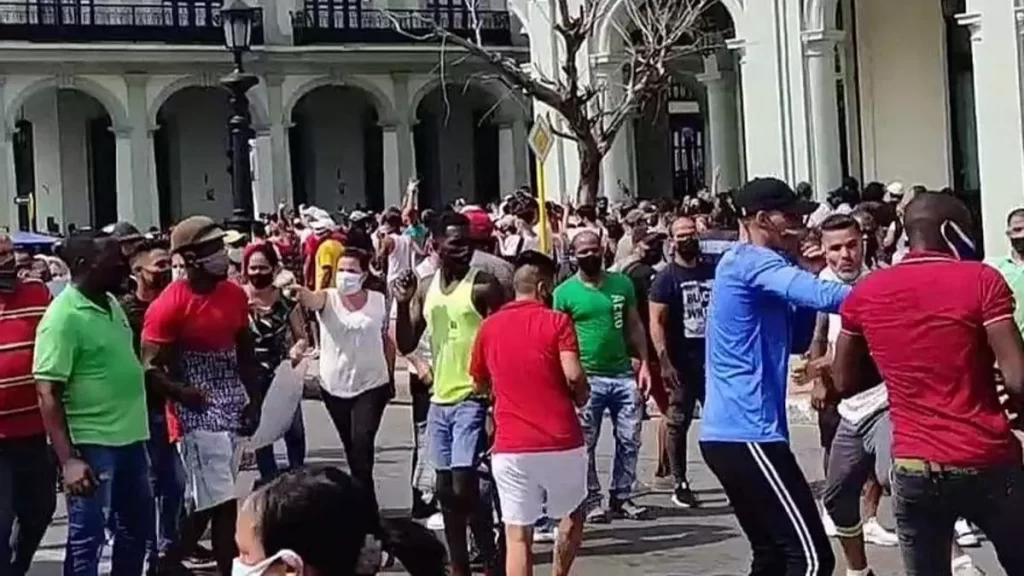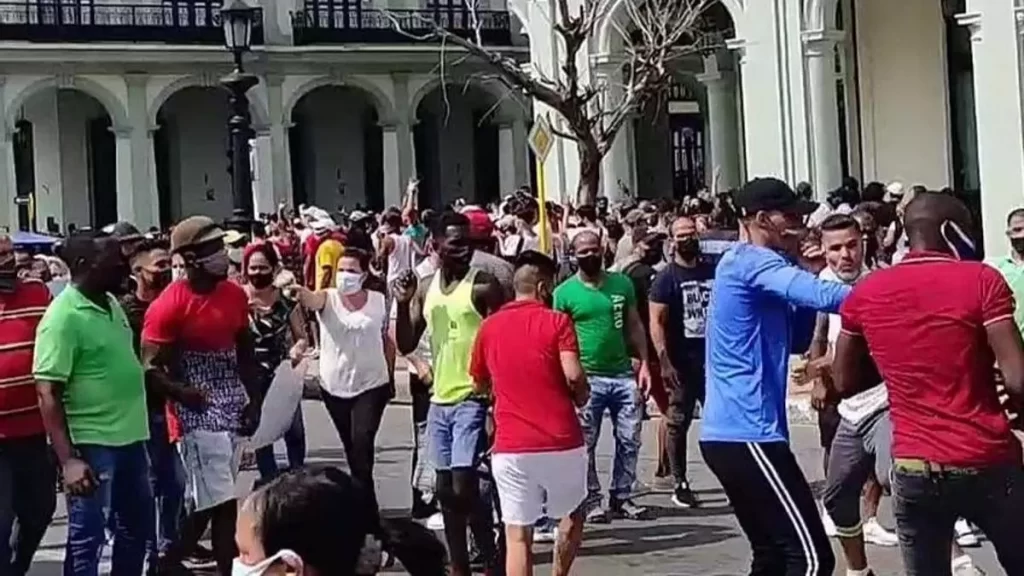
14ymedio, Havana, Juan Izquierdo, March 13, 2024 — With two recent heart attacks on his medical record and a sentence of 15 years in prison, political prisoner Wilfredo Castillo received a license last week to leave the Agüica prison, in Matanzas, for a year. Haggard and thin, his most recent photograph – in a hospital room – is eloquent about the health of a 55-year-old man who, along with hundreds of Cubans throughout the Island, suffered the consequences of going out to protest on July 11, 2021 (11J).
In the witch hunt that followed that day, the Government arrested 1,580 demonstrators, of whom 676 remain detained. The temporary release of Castillo is the most recent news about that initial group, to which – after several relevant protests in past years – several hundred names have been added. Between 11 July 2021 and February of this year, according to several organizations, more than 1,900 demonstrators have been arrested, 1,067 of whom are still imprisoned, including the artist Luis Manuel Otero Alcántara and the opponent José Daniel Ferrer.
Only 18 of those who were sentenced for taking to the streets on 11J are free and continue to live in Cuba, according to the NGO Justicia 11J. Another 80 went into exile – especially to the United States, Spain and the rest of Europe – and have resumed their activism outside the country.
The 11J demonstrations were not only a watershed moment for the opposition, but they also modified the landscape of human rights organizations inside and outside the Island
There are 663 demonstrators who have been released from prison but are serving some kind of sentence. Penalties include house arrest, restriction of mobility, correctional work, fines and bail. In addition to Castillo, only two other licenses to leave prison have been granted due to an inmate’s serious state of health: for Juan Carlos Izquierdo, in Mayabeque, and Mario Josué Prieto Ricardo, in Holguín.
The inventory of Justicia 11J does not have data on 141 of the detainees after the protests, but it does keep records for those who, in addition to participating and being imprisoned on that date, participated in organizing the Civic March of November 15, 2021, and the protests of 2022 – including those in Nuevitas, Camagüey, in August of that year and in 2023.
The 11J demonstrations were not only a watershed moment for the opposition, but they also modified the landscape of human rights organizations inside and outside the Island. After the clamor of the protest, several observatories and institutions emerged with the goal of counting the detainees and making visible, along with the independent press, the repression and the precarious conditions to which they are subjected in prison.
“The hardest thing in prison? In prison everything is


